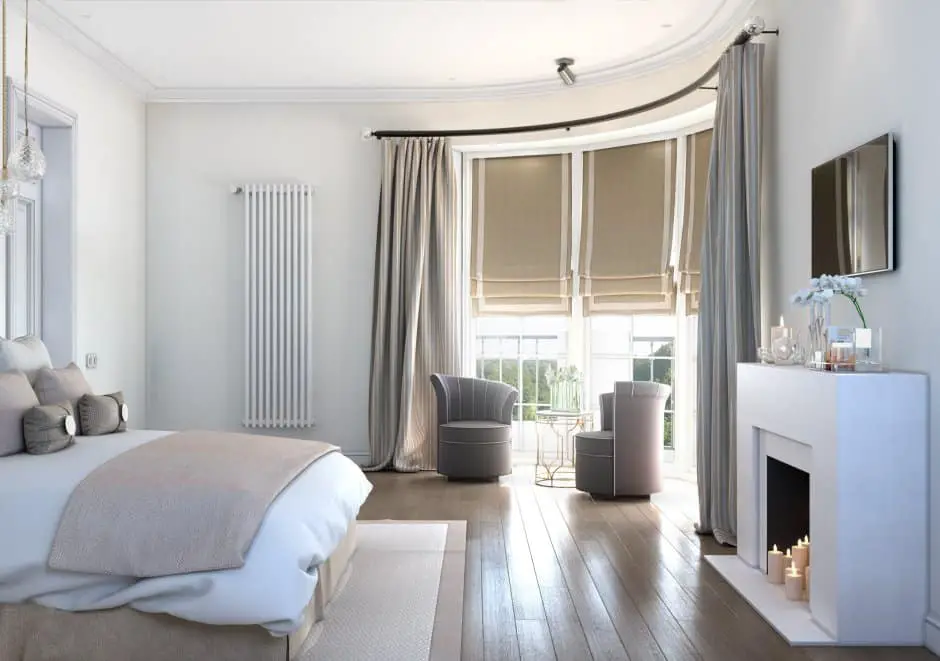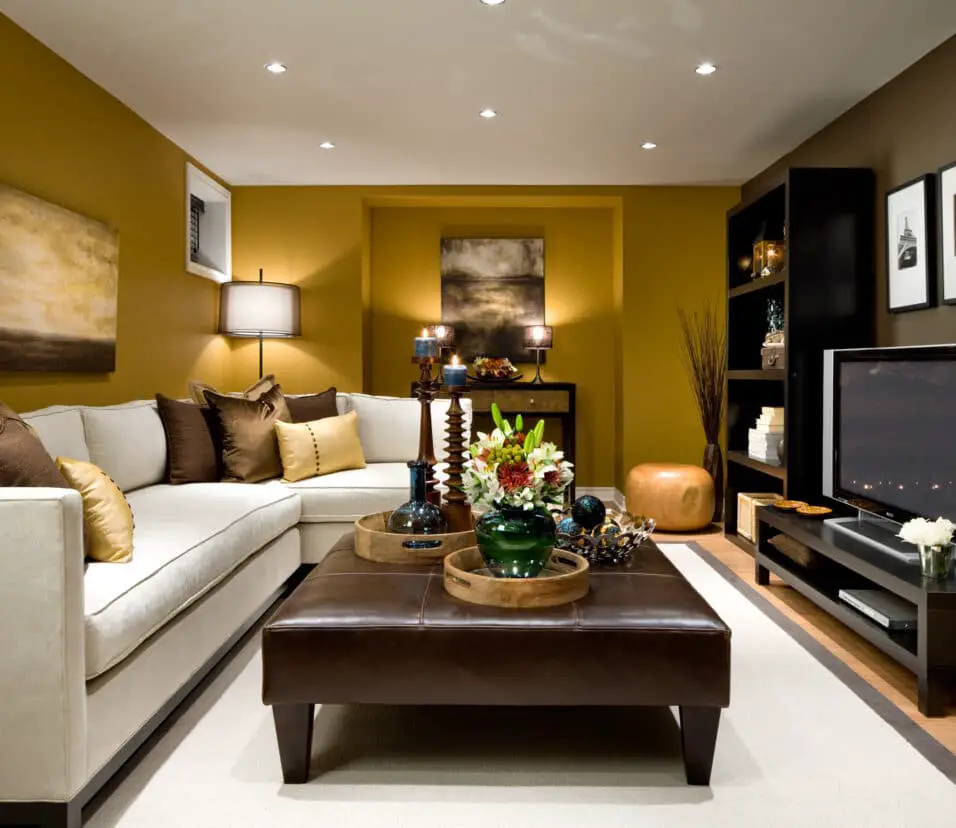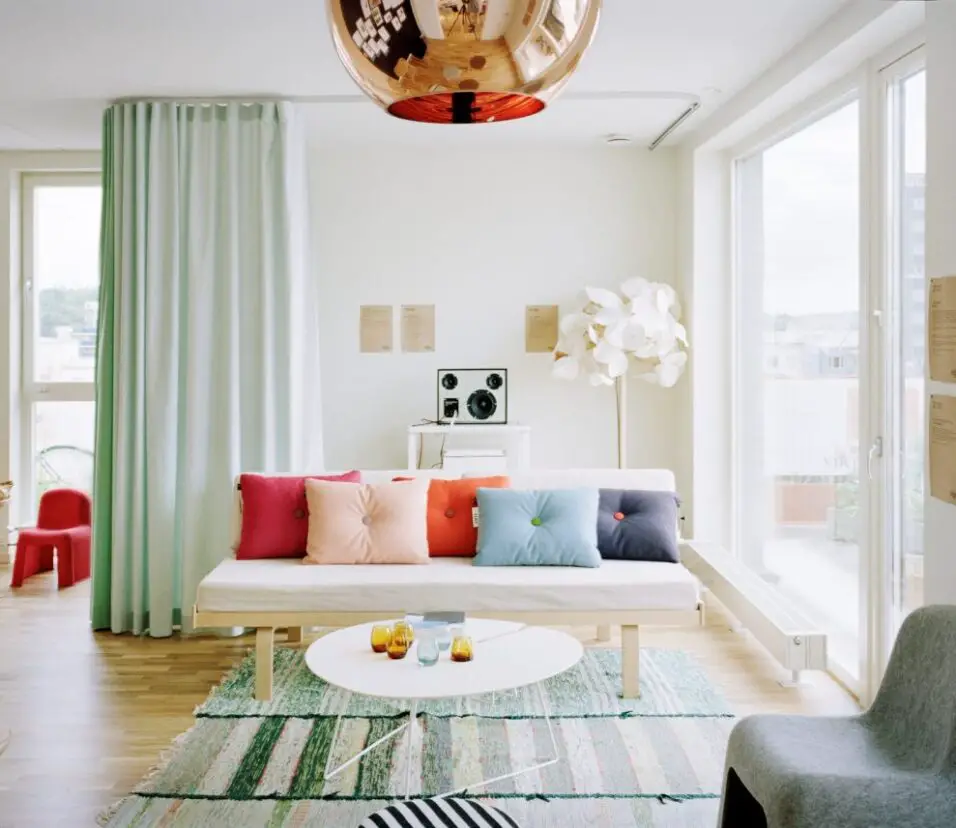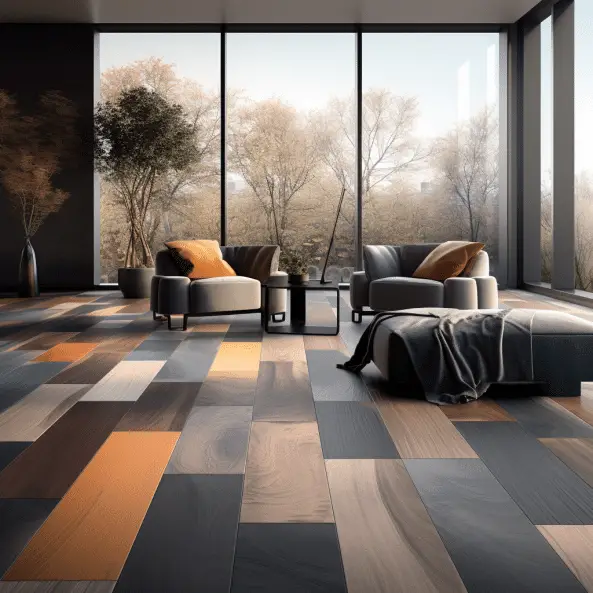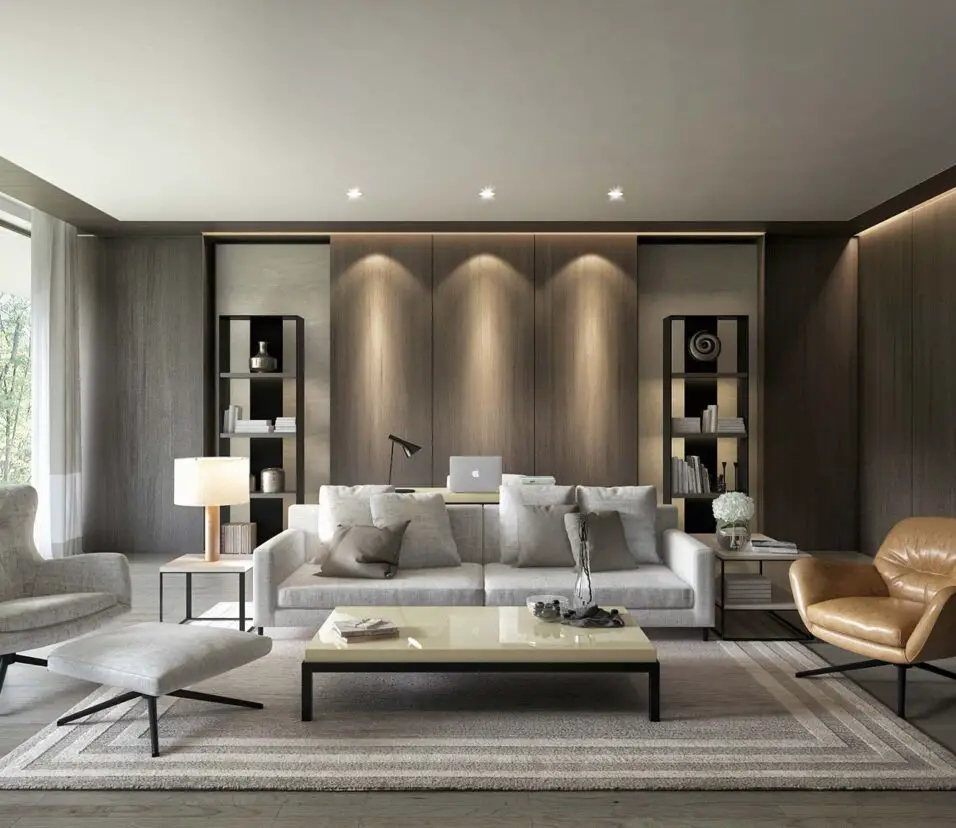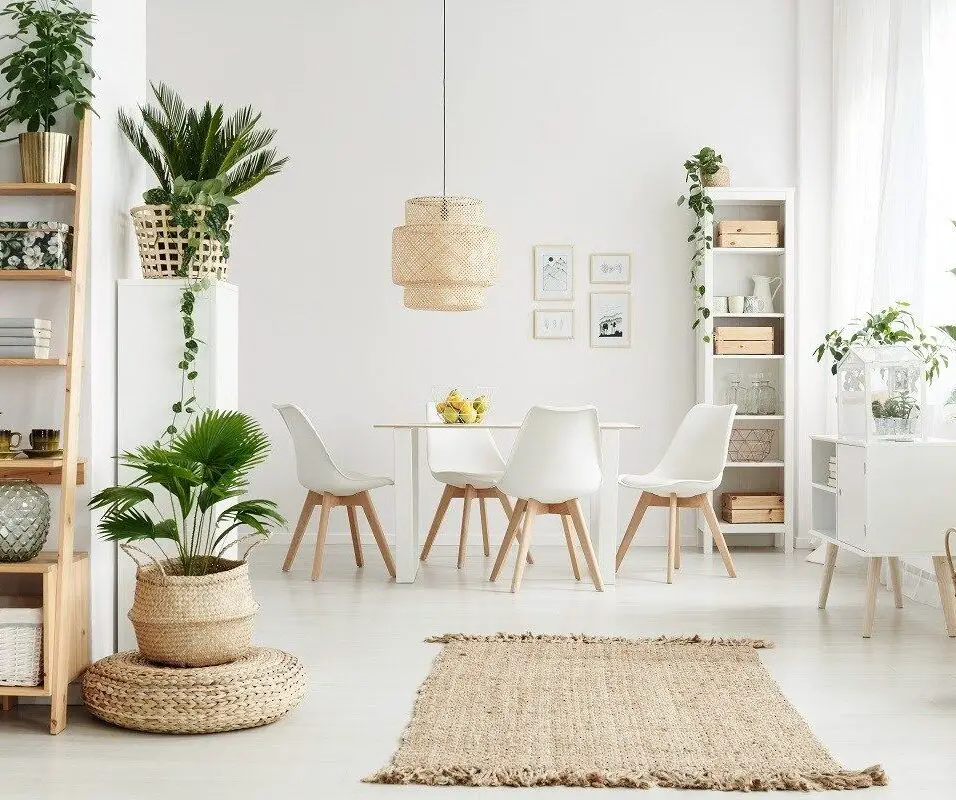What Color Curtains Make A Room Look Bigger
Introduction
What Color Curtains Make A Room Look Bigger: Color has a profound impact on our perception of space. Lighter colors, such as whites, creams, pastels, and soft neutrals, tend to reflect more light and create a sense of openness. They have the ability to bounce natural and artificial light around the room, making it feel brighter and more expansive. On the other hand, darker colors absorb light, which can create a sense of intimacy and coziness but may also make a room feel smaller and more enclosed.
When it comes to choosing curtain colors that make a room look bigger, it is generally recommended to opt for lighter shades. White curtains, in particular, are a popular choice for creating a spacious feel. They have a timeless and versatile quality that complements various interior styles, from minimalistic to traditional. White curtains not only enhance the natural light in a room but also provide a clean and airy backdrop that visually expands the space.
However, if you prefer some color in your curtains, there are still options that can make a room appear larger. Light pastel shades like pale blues, soft pinks, and gentle greens can also work well in creating a sense of openness. These colors bring a subtle hint of color while maintaining a light and airy ambiance. In addition to color, other factors such as fabric texture, curtain length, and the way you hang the curtains can also influence the perceived size of a room. Choosing lightweight and sheer fabrics allows more light to pass through, further enhancing the spacious feel.
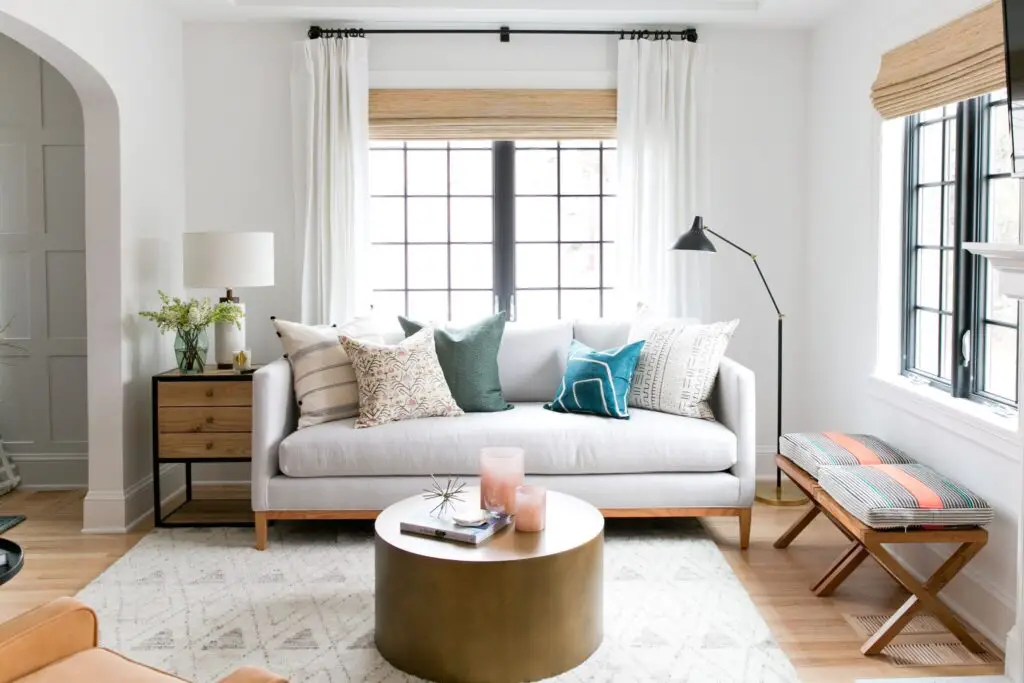
What color curtains makes a room look bigger?
If you’re looking for ways to make a small room look bigger, you’ve come to the right place. Below, we’ve put together our top tips to create the illusion of extra space in your home. Light colours are more reflective than dark ones and therefore they’re ideal for small spaces.
Monochromatic Color Schemes
Opting for a monochromatic color scheme can contribute to the perception of a larger room. This involves selecting curtain colors that are similar or slightly different shades to the wall color. When the curtains blend seamlessly with the walls, it creates a continuous visual flow and eliminates any stark contrasts that can visually divide the space. Monochromatic schemes create a sense of harmony and cohesion, making the room appear more spacious.
Vertical Stripes
Incorporating vertical stripes in your curtain design can create an illusion of height, making the room appear taller and more expansive. Vertical stripes draw the eyes upward, giving the impression of higher ceilings. When selecting striped curtains, choose colors that are lighter or in the same color family as the walls.
Light and Neutral Colors
Light and neutral colors are known to make a room look bigger. Shades like white, cream, beige, and soft pastels have the ability to reflect more light, making the space feel brighter and more expansive. Light-colored curtains create a clean and airy backdrop, allowing natural and artificial light to bounce around the room. This opens up the space and gives the impression of a larger area.
Choosing lightweight and sheer fabrics allows more light to pass through, further enhancing the spacious feel. Opting for floor-to-ceiling curtains or hanging them higher than the actual window frame can create an illusion of height and draw the eye upward, giving the impression of a taller room. These techniques help to maximize the visual impact of the curtains and create a more expansive atmosphere.
What colour curtains make room look brighter?
Go with lighter curtains
Heavy curtains make the room feel dark when you want to lighten the room to make it feel brighter. Focus on the lighter curtain colors as well. A warm yellow or soft blue can help turn any room airier. You want your curtains to help spread light in your room while adding privacy.
White Curtains
White is a classic and timeless color that can instantly make a room look brighter. Curtains reflect light and create a sense of openness and airiness in the space. They allow natural light to pass through, maximizing its effect and making the room feel more illuminated. White curtains are especially effective in rooms with limited natural light, as they help brighten up the space and create a fresh and clean backdrop. Additionally, white curtains can complement any color scheme or design style, making them a versatile choice.
Aside from white, other light colors such as pastels, creams, and soft neutrals can also contribute to a brighter room. These colors reflect more light compared to darker shades, resulting in a more luminous and open space. Soft pastel colors like light blue, pale pink, and mint green can add a subtle hint of color while maintaining a bright and airy ambiance.
Consider the Room’s Lighting Conditions
When selecting curtain colors to make a room look brighter, it’s essential to consider the room’s lighting conditions. If the room receives ample natural light, you can opt for curtains in lighter or sheer fabrics to maximize the brightness. For rooms with limited natural light, consider curtains in lighter colors that reflect and enhance artificial light sources.
In addition to the color and fabric choice, the way curtains are hung can also impact the brightness of a room. If you want to maximize the natural light, consider hanging the curtains wider than the actual window frame. This technique allows the curtains to be fully drawn back, allowing more light to enter the room when desired. Additionally, choosing curtains that are longer than the window height can create an illusion of taller windows, enabling more light to filter in from the top.
Do curtains make a room look bigger or smaller?
Making Your Room Look Larger or Smaller with Curtains
High-hanging curtains with long vertical stripes create the illusion of height, which is excellent for low ceilings. However, short curtains and horizontal stripes shorten your wall height and make the room appear smaller.
When it comes to making a room look bigger, there are a few key factors to consider. First and foremost, the color of the curtains plays a crucial role. Lighter colors, such as whites, creams, pastels, and soft neutrals, have the ability to reflect more light, creating a sense of openness and spaciousness. These colors help to bounce natural and artificial light around the room, making it feel brighter and more expansive. White curtains, in particular, are a popular choice as they provide a clean and airy backdrop that visually expands the space.
In addition to color, the fabric texture and transparency of the curtains can also affect the perceived size of a room. Choosing lightweight and sheer fabrics allows more light to pass through, creating a brighter and more open atmosphere. Sheer curtains, in particular, add a delicate and ethereal touch to the space while maintaining a sense of spaciousness. On the other hand, heavy and opaque fabrics can make a room feel smaller and more enclosed.
The length and hanging technique of the curtains are other factors to consider. Floor-to-ceiling curtains or those that are slightly longer than the window height can create a vertical line, giving the illusion of higher ceilings and a taller room. This technique draws the eye upward, making the room feel more expansive. It’s also recommended to hang the curtains wider than the actual window frame, allowing more light to enter the room and giving the impression of larger windows.
Should curtains be lighter or darker than wall colour?
The rule of thumb is to choose curtains that are in the same colour family as the walls. Yet, be sure to choose a slightly lighter or darker share of the wall to create a tone-on-tone effect. In the past, the trend was to choose curtain colours in the opposite or complementary on the colour wheel of your wall paint.
Desired Mood and Style
The desired mood and style of the room can also influence the decision of whether curtains should be lighter or darker than the wall color. Lighter curtains generally create a brighter and more airy atmosphere, which can work well in rooms that aim for a light and fresh feel.
This option is particularly suitable for smaller spaces or rooms with limited natural light, as it helps maximize the available light and create a more airy atmosphere. Lighter curtains also provide a clean and neutral backdrop that allows other elements in the room to stand out, such as furniture, artwork, or decorative accents.
Balance and Contrast
When selecting curtain colors, it’s important to consider the balance and contrast within the room. Lighter curtains can provide a sense of balance in rooms with darker or bold wall colors, creating a visually pleasing contrast. Conversely, darker curtains can add depth and contrast to rooms with lighter or neutral wall colors, creating visual interest.
Darker curtains work particularly well in rooms with ample natural light or when combined with lighter wall colors, as the contrast between the two can create a striking visual effect. However, it’s important to ensure that the room still maintains a balance and does not feel overly heavy or oppressive.
In addition to the color contrast, other factors such as fabric texture, pattern, and the overall style of the room should also be taken into consideration. The curtains should harmonize with the overall design scheme and complement the existing elements in the room.
For example, if the room features a minimalist or Scandinavian design, lighter curtains may align better with the clean and streamlined aesthetic. Conversely, if the room has a more traditional or dramatic ambiance, darker curtains can enhance the desired atmosphere.
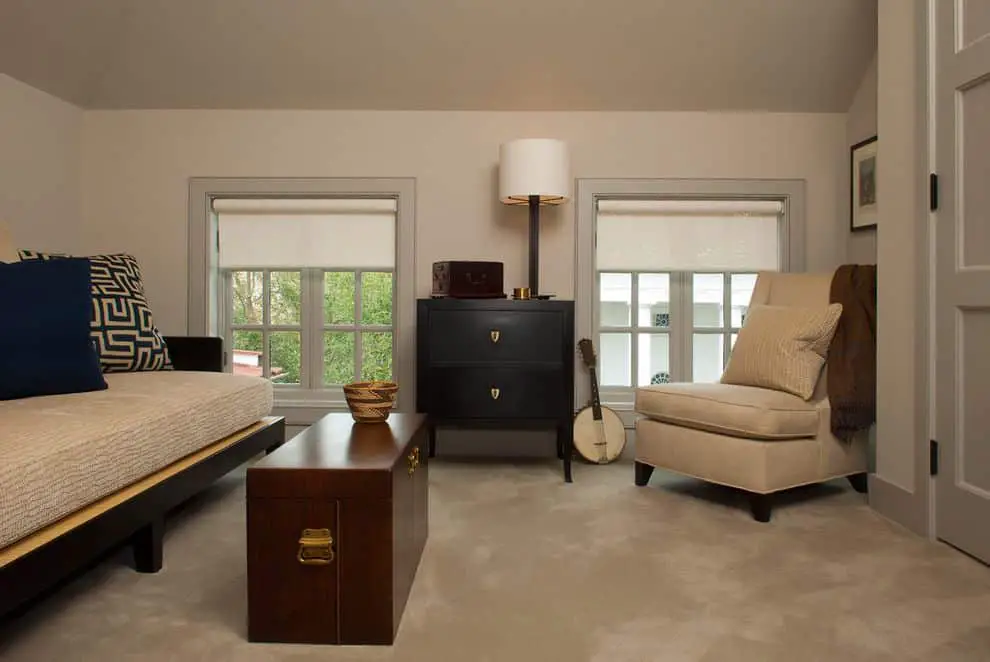
Should curtains be darker than the walls?
‘Let the desired emotive feel for the finished room lead the choice. It is not wrong to go dark or light in contrast to the walls, it is a matter of playing with the senses and our interaction with the light, mood and ambiance. ‘ ‘If the wall is darker, we generally go with lighter curtains or vice versa,’ says Ling.
Darker Curtains
Choosing darker curtains compared to the wall color can create a different visual impact and add depth and drama to the room. Darker curtains, such as deep browns, rich blues, or charcoal grays, can create a sense of coziness and intimacy. They can make a bold statement and add a touch of elegance to the space. Darker curtains work particularly well in rooms with ample natural light or when combined with lighter wall colors, as the contrast between the two can create a striking visual effect.
One advantage of darker curtains is their ability to conceal dirt, stains, or fading over time. In high-traffic areas or rooms prone to sunlight exposure, darker curtains can maintain their appearance and require less frequent cleaning or maintenance compared to lighter-colored curtains.
Contrast and Accent Colors
For those looking to make a statement or add visual interest, curtains in contrasting or accent colors can be a great choice. Contrasting colors create a vibrant and eye-catching effect, as they provide a striking contrast to the wall color. For example, if the walls are a light shade, curtains in a bold color like deep red or vibrant blue can create a focal point and add energy to the room.
This helps create a balance and prevents the room from feeling too heavy or oppressive. It’s also important to consider the size of the room; in smaller spaces, dark curtains may dominate the visual field and make the room feel more confined. In such cases, lighter-colored curtains or curtains with patterns and textures can be more suitable.
Other factors, such as fabric texture and curtain length, also play a role in determining the impact of darker curtains. Textured fabrics like velvet or jacquard can add depth and richness to the room. Additionally, choosing longer curtains that extend from the ceiling to the floor can create a vertical line that visually elongates the space, counteracting any potential shrinkage effect caused by the darker color.
What color curtains go with walls?
It is recommended that you get curtains that are slightly darker or lighter than your wall shade to avoid making the room feel dull. White curtains are classy and clean. They have the ability to brighten up any room (even a beige one). To go bold in a beige room you can also try getting orange curtains.
If you want a safe and versatile option, consider curtains in neutral colors that complement your wall color. Neutrals like whites, creams, beiges, or grays can create a cohesive and sophisticated look, allowing the walls to take center stage. This approach works well in minimalist, modern, or Scandinavian design styles where a clean and understated aesthetic is desired. Monochromatic combinations, where the curtain color is a shade or two lighter or darker than the wall color, can also create a harmonious and cohesive effect.
Creating Contrast
Opting for darker curtains can create a striking contrast against lighter-colored walls. This contrast can add depth and visual interest to the room, making the curtains stand out as a focal point. The darker curtains can draw attention and create a sense of drama, particularly if the walls are a lighter or neutral shade.
Concealing Stains and Wear
Darker curtains have the advantage of being more forgiving when it comes to hiding stains, dust, or signs of wear and tear. Light-colored curtains tend to show dirt more easily, requiring more frequent cleaning and maintenance. In high-traffic areas or rooms where there is a higher risk of stains, darker curtains can be a practical choice as they can maintain their appearance for longer periods without requiring frequent cleaning.
The texture and pattern of the curtains. If your walls have a smooth and plain finish, you can add interest and depth with textured curtains. For example, textured fabrics like linen, silk, or velvet can create visual interest and complement the smoothness of the walls. Alternatively, if your walls have a patterned design, opt for curtains in a solid color to avoid overwhelming the space. Alternatively, if you have plain walls, curtains with patterns or prints can add visual excitement and serve as a focal point.
What colour curtains go with everything?
Which color curtains go with everything? Neutral curtains in tones such as beige, taupe and gray, as well as white and nearby shades such as ivory and cream can be the go-with-everything choice.
White is a classic and timeless color that can work well with any decor style. White curtains provide a clean and fresh look, allowing other elements in the room to stand out. They create a sense of openness and brightness, making the space feel larger and more airy. White curtains can easily blend with both neutral and bold color schemes and serve as a versatile backdrop for various design choices.
White Curtains
A classic and universally appealing color choice for curtains. A clean and fresh backdrop that goes well with any color scheme or design style. They provide a sense of simplicity and elegance, allowing other elements in the room to take center stage. White curtains work particularly well in rooms with a minimalistic, Scandinavian, or contemporary design aesthetic.
Gray Curtains
Gray is a versatile neutral color that comes in various shades, ranging from light silver to deep charcoal. To different design styles and color palettes, making them a safe choice for any room. Lighter shades of gray create a contemporary and airy ambiance, while darker shades add depth and drama. Gray curtains can be a great option for modern, industrial, or even transitional interiors.
Curtains in natural or earthy tones, such as light browns, taupes, or muted greens, can also serve as a versatile option. These colors create a sense of warmth and harmony, allowing them to complement a wide range of color schemes. Natural tones can add a touch of organic beauty to the room and provide a calming and grounding effect.
What should curtains match in a room?
The color of the walls or ceiling
The color you decide to put on your walls is also important when choosing curtains. For example, if a living room has a lot of beige walls and dark blue furniture, choosing drapes in shades of orange like marigold, honey, or bronze can help make the room look more balanced.
Wall Color
Matching curtains to the wall color is a common approach that creates a seamless and unified look. Curtains in the same color as the walls create a sense of continuity and make the room feel more spacious. This approach is particularly effective in smaller rooms or those with low ceilings, as it avoids visual breaks and promotes a cohesive flow. If you prefer a subtle contrast, you can choose curtains that are a shade or two lighter or darker than the wall color.
Accessories and Accents
Take into account the accessories and accents in the room when selecting curtains. Consider elements such as artwork, rugs, throw pillows, or decorative items and ensure that the curtain color or pattern complements or enhances these accents. Creating a visual connection between the curtains and other accessories can contribute to a cohesive and well-curated space.
Personal Preference
Ultimately, personal preference should guide your decision when matching curtains in a room. Consider your own taste, style, and the ambiance you wish to create. Curtains offer an opportunity to express your individuality and add personality to the room, so choose options that resonate with you and contribute to the overall atmosphere you desire.
The function and desired mood of the room should also influence curtain matching. For example, in a bedroom where you want to create a calm and relaxing ambiance, consider curtains in soothing colors or with blackout features for better light control. In a living room or dining area where you want to create an inviting and vibrant atmosphere, you can choose curtains in bold or contrasting colors to make a statement.
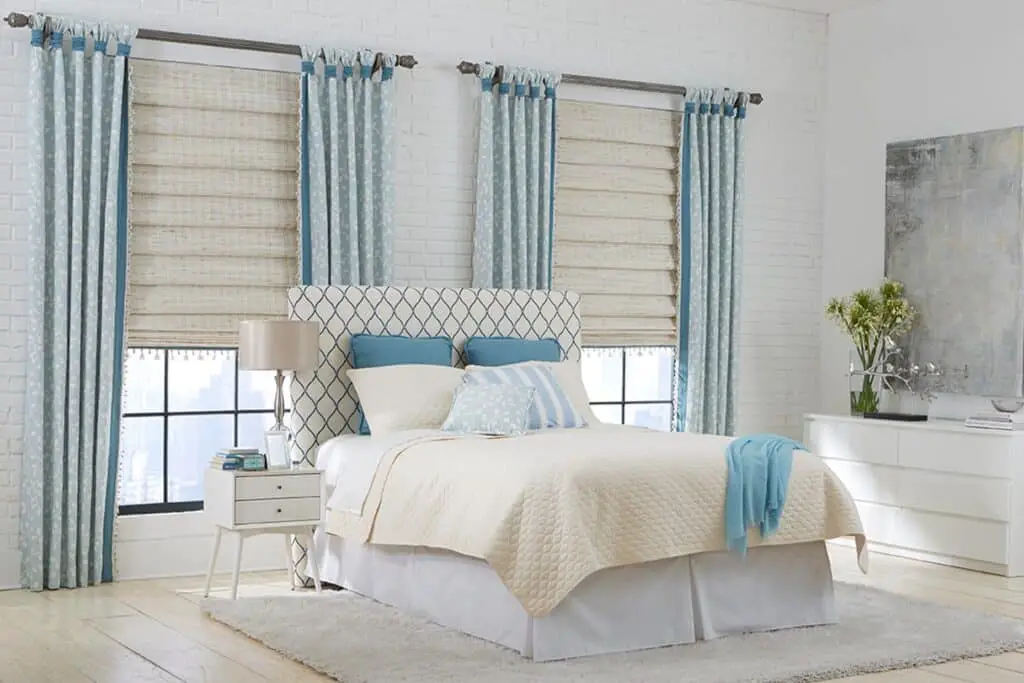
Conclusion
Firstly, the fabric texture of the curtains can make a difference. Opting for lightweight and sheer fabrics allows more natural light to filter through, creating a brighter and more expansive atmosphere. Color curtains also add a delicate and ethereal touch to the space, further enhancing the illusion of openness. Lastly, considering the overall color scheme and decor of the room is essential. Choosing complementary wall colors and furniture that align with the curtain color can create a cohesive and harmonious look.
Another factor to consider is the length of the curtains. Floor-to-ceiling curtains or ones that are slightly longer than the actual window height can draw the eye upward and create a vertical line, giving the impression of higher ceilings and a taller room. This technique can add a sense of grandeur and spaciousness to the overall aesthetic.
Furthermore, the way the curtains are hung can impact the perceived size of the room. Hanging curtains higher and wider than the window frame creates the illusion of larger windows, allowing more light to enter and giving the room a more open feel. Additionally, using curtain rods that extend beyond the window frame on either side can make the window appear wider, enhancing the sense of space. By maintaining a sense of unity throughout the space, you can enhance the overall impression of spaciousness.



